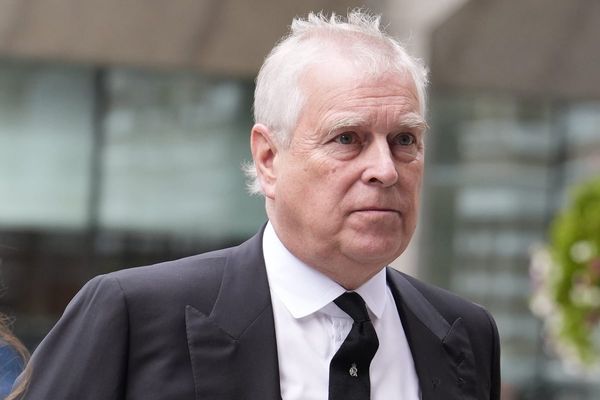
Seven years after the Sunflower Movement, the specter of state violence still haunts a group of protesters. Hundreds of participants in the short-lived occupation of the Executive Yuan, the executive branch of Taiwan’s government, are still awaiting redress for police brutality.
A fraction of sunflower protesters broke into the Executive Yuan complex on the night of March 23, 2014 — five days after occupying the legislature to demonstrate against the Cross-Strait Service Trade Agreement (CSSTA), which would have allowed Chinese investment in Taiwan’s service sector.
The occupation ended in bloodshed in a matter of hours as police forces were reinforced to evict the protesters. Many were staging a sit-in in the plaza before the complex, while some others had entered the main building and burst into the premier’s office.
“They struck me with a baton, kicked me with their boots. I couldn’t stand up to leave the site, but they yanked me out of the building,” said Lin Zhi-jie, a participant of the attempted occupation who lost consciousness after the violence, only to wake up at a hospital ward. “I wanted to voice my demands, but this was how I was treated.”
To raise awareness of the cases of police brutality, the Judicial Reform Foundation organized a series of talks in March and curated an exhibition detailing the most violent episode of the movement. A placard on display said at least 62 ambulances were seen rushing through the crowd from the late night of March 23 into the early morning, carrying over 200 injured people to the hospital.

Lin, among other injured protesters, filed a lawsuit against the government for his physical injury, with the help of Lo Wan-ting, one of the lawyers who volunteered to represent sunflower protesters after the demonstrations.
Lo said, “We want someone to admit what they did was wrong,” adding that the former premier Jiang Yi-huah denied authorizing the violence at court and said what police officers did that night was “patting the protesters on the shoulder.”
Lawsuits initiated by the injured had dragged on for seven years. “It was the first time for many of these defendants to enter the prosecutor’s office. They want to resolve their case as soon as possible,” Lo said. “But it only started to proceed in 2018, and last year, we got the result: ‘people not found,’” referring to the name of the exhibition.
Lin’s life has become entangled in litigation since he made up his mind to take legal action against the government. “When I was doing my military service, a legal letter about the case was sent to the camp from the court,” he said. “You can imagine how officers saw me after they read the letter that says I’m suing Ma Ying-jeou (former president) for attempted murder.”
But in the end, only four cases of private prosecution were presented at court, not including Lin’s. The cases were closed in 2020 when a Taipei court found the Ma administration not guilty of attempted murder and afflicting physical injury on the protesters.

Most cases of injured protesters were dismissed, said Lee Ming-ju, a lawyer for the Judicial Reform Foundation. It is either because the court believed they were filed against the same group of people — and should be ruled altogether — or because the judges could not identify those behind the violence, the police officers and commanders of the eviction operation.
“The court made an official inquiry to the National Police Agency and the Taipei Police Department,” she said. “But they always said they could not find or identify these people.”
While no one has taken responsibility for the excessive use of force, the state was quick to bring sunflower protesters who attempted to occupy the Executive Yuan to justice. In 2015, 132 participants of the failed occupation were indicted for trespassing on state buildings, vandalism, and other reasons.
After the Kuomintang’s major defeat in the 2016 elections, the new Democratic Progressive Party government took office and withdrew the charges of intrusion against more than a hundred of the participants. In Taiwanese law, this category of offense cannot be prosecuted without a complaint by the victim, in this case, the state.
Still, about twenty were sent on trial, including seven figures sentenced to prison in 2020 for inciting crime during the occupation. But the Supreme Court overturned the ruling and ordered a retrial earlier this year, citing the right of resistance and civil disobedience.

During the Sunflower Movement, many students, like Lin Rui-zi (no relation with Lin Zhi-jie), skipped classes to demonstrate and later participate in the attempted occupation, aiming to force the then-government to respond to their demands, including withdrawing the trade agreement with China. But the police violently cracked down on them in four waves of eviction until the area around the Executive Yuan was cleared.
“I had ponytails back then, and police officers yanked them to get me out of the building,” Lin said. “It’s been seven years, and I still feel really uncomfortable when people touch the back of my head.”
Lin tried to come to terms with the mental trauma that follows the day. “Before 2019, my hair was short. It was only last year when I decided to solve the damage they inflicted on me,” she said.
Lin described the night of violence as “a meteorite that fell on her life trajectory.” She decided to leave the university where her professors ridiculed her injury and went on to study human rights.
With a background in theater, Lin has been involved in a number of stage productions for children on state brutality and the White Terror, the period in Taiwan’s history when political dissidents were suppressed, imprisoned, and sometimes executed.
Hsiao Kai-wen, another protester, said she remembered how passionate she was seven years ago, hoping to change the country through social movements. She spoke to an audience of mostly university students at the exhibition space.
“People often ask me if I regret participating in the occupation,” she said. “I think I don’t — because we have planted the seeds and established the significance of the movement for the future generations of Taiwan.”
READ NEXT: Sunflower Activists Found Guilty, Overturning Previous Ruling
TNL Editor: Nicholas Haggerty (@thenewslensintl)
If you enjoyed this article and want to receive more story updates in your news feed, please be sure to follow our Facebook.







